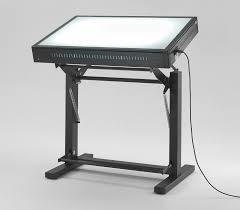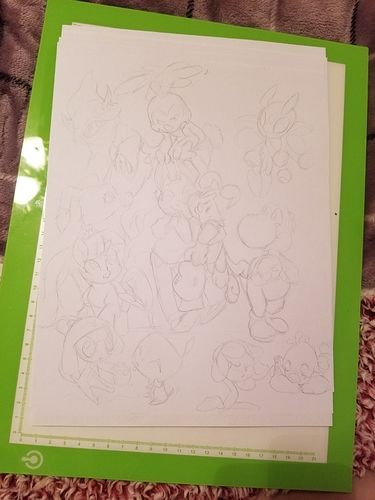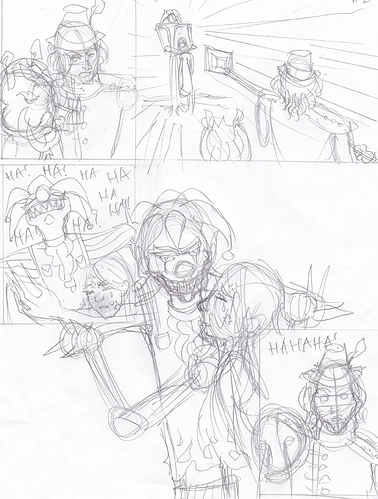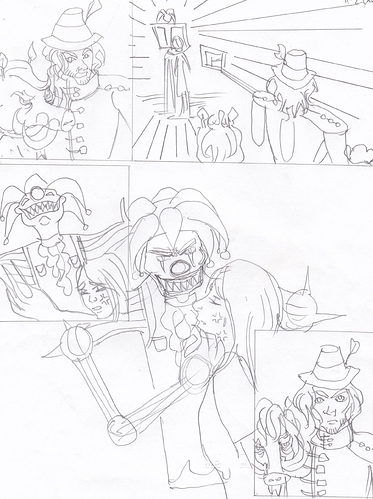Well, I draw on a cintiq so everything I do is drawn and mapped out the same way you would do with a light box. I just do it digitally instead. And I do my page thumbnails on paper so I can pin them and reference them while I'm drawing digitally. Before I got a cintiq I did it the same way as you before getting it in to ink but now I don't need to
I did my first one-shot with mixed media- traditional line work + digital coloring. I ended up changing my work process a few times as I went along.
I started out just using regular pencil, inking over it, and erasing the pencil prior to scanning (like I had always done in the past).
Then I got fed up with the erasing step and changed over to sketching in non-photo blue pencil instead.
FInally I was getting tired of the details I was losing during inking due to not being able to see the sketch super well (those blue pencils are a tad light colored for me) so I changed over to sketching digitally, printing those out and using my light box to ink. That transition started right around these pages and continued all the way to the end:
posted this photo on instagram showing off the new process lol
and some others like this showing the printed sketches (2 letter size pages per comic page... RIP my printer ink)
I only ended up doing this because I was committed to seeing the comic through to the end with the trad. line work though. I'm going all digital for the next one 
Planning on getting me an LED lightbox; I wanna start back doing some traditional art stuffs- especially after I move & get my art station set up. I kinda feel like a lot of my first sets of prints looked a lot more solid in terms of composition & finish coz I had inked them traditionally...
@Rhonder I would blue line right on the bristol I was going to ink(I would blue line a rough finish from thumbnails that I would blow up via lightbox); when scanning(I'd scan in black & white), the blue lines wouldnt show in the digital file...I'd then set it up and color digitally.
Oh yeah, I might not have explained well, but that was how I was using them as well (kind of, I just went straight at it with the blue, without printing out my digital thumbnails). They disappeared with scanning as desired... but the blue was so light that I could barely make out some of the smaller details I had sketched just a day or two beforehand. I could see my graphite lines a lot more clearly but then there was the erasing hassle... so the final solution with printing out digital sketches to light box over ended up being a nice halfway compromise 
@Kiweevil what you posted a pic of appears to be a light box...a light table is a "table"- with legs. If your item has legs it can be propped up on, then it would be considered a light table.
Light tables:

I've used lightbox a couple of times with thick colored paper mostly and water markers. What I did was actually draw a rough sketch on my pc, print it on cheap thin paper and then transfer to thick paper with a lightbox. It was also a great way to practice with golden ink which was tricky for me due to its viscosity
Actually my sisters' boyfriend is shipping them worldwide and so I got mine as a present.
check out their instagram if you like
Hey fellow artists!!!!
So I just received my light box pad and wow! I am struggling to draw on the 2nd page on top of the rough sketch! It's hard to see my new lines maybe it's because the first page with the rough sketches should have been drawn with colored non photo pencil like blue or red or something.
What do you all think? This is my first time owning a light box so any help is appreciated! Thank you all 
The darker the line, the easier it will be to see through to your other papers. I usually just stick with a normal pencil until the final stages. If your paper is quite a bit thicker (so if it's illustration board or watercolor paper) then it will be hard to see through, and for something really thick, I would do a different method to transfer the final image.
But if you mean like it's hard to tell the difference between your lines--then yeah I can get that. You sort of get used to it after a while, turning on and off the lightbox to get a sense of what your top image looks like.
That's exactly my problem about not seeing the difference in the lines when you draw. When I lift my 2nd paper I'm tracing on it looks worse than the first sketch because I picked the wrong lines I guess?
I think you're right I have to master how to do this and it takes time to get use to it..
Example original sketch
Now the 2nd paper I tried to trace the original
@CrystallikeICE there is a certain amount of "training" that goes with it(kind of like when you first go digital to train your eyes to follow the screen and trust your hands on the [non-screened] tablet)...you have to be able to discern which line is the one you want to do the final drawing off of and go from there. I usually did my stuff as really small thumbnails, blew the images up on a copier, and light boxed with non photo blue pencil onto bristol; I then inked over the blue lined bristol & scanned my work in.








